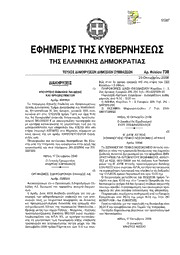
Obstetric anal sphincter injuries PDF
Preview Obstetric anal sphincter injuries
(cid:50)(cid:69)(cid:86)(cid:87)(cid:72)(cid:87)(cid:85)(cid:76)(cid:70)(cid:3)(cid:68)(cid:81)(cid:68)(cid:79)(cid:3)(cid:86)(cid:83)(cid:75)(cid:76)(cid:81)(cid:70)(cid:87)(cid:72)(cid:85)(cid:3)(cid:76)(cid:81)(cid:77)(cid:88)(cid:85)(cid:76)(cid:72)(cid:86) (cid:36)(cid:3)(cid:83)(cid:82)(cid:83)(cid:88)(cid:79)(cid:68)(cid:87)(cid:76)(cid:82)(cid:81)(cid:16)(cid:69)(cid:68)(cid:86)(cid:72)(cid:71)(cid:3)(cid:86)(cid:87)(cid:88)(cid:71)(cid:92)(cid:3)(cid:82)(cid:73)(cid:3)(cid:76)(cid:80)(cid:83)(cid:85)(cid:82)(cid:89)(cid:72)(cid:80)(cid:72)(cid:81)(cid:87)(cid:3)(cid:82)(cid:73)(cid:3)(cid:70)(cid:68)(cid:85)(cid:72) (cid:36)(cid:86)(cid:87)(cid:85)(cid:76)(cid:71)(cid:3)(cid:37)(cid:72)(cid:87)(cid:87)(cid:72)(cid:81)(cid:3)(cid:53)(cid:92)(cid:74)(cid:75) Dissertation for the degree of philosophiae doctor (PhD) at the University of Bergen (cid:21)(cid:19)(cid:20)(cid:24) Dissertation date: (cid:39)(cid:72)(cid:70)(cid:72)(cid:80)(cid:69)(cid:72)(cid:85)(cid:3)(cid:20)(cid:20)(cid:87)(cid:75) 2 © Copyright Astrid Betten Rygh The material in this publication is protected by copyright law. Year: 2015 Title: Obstetric anal sphincter injuries A population-based study of improvement of care Author: Astrid Betten Rygh(cid:1) Print: AIT OSLO AS / University of Bergen 3 Scientific environment This research project is a collaboration between the Department of Obstetrics and Gynecology and the Department of GI Surgery at Stavanger University Hospital in affiliation with the Department of Clinical Medicine K1, University of Bergen (UiB). A collaboration partner has been the Faculty of Health Sciences, Department of Community Medicine, Research Group Epidemiology of Chronic Diseases, UiT The Arctic University of Norway, Tromsø. I have been member of the Research Group for Women and Child Health of Stavanger University Hospital and The Postgraduate School of Clinical Medical Research, Department of Clinical Medicine K1, UiB, and I have followed the PhD program of the Faculty of Medicine and Odontology at the University of Bergen. 4 Acknowledgements First, I would like to express my thanks to my main supervisor, Professor Hartwig Körner, gastroenterological surgeon, for great supervision throughout this research project. His encouragement was always generous and wise. His high competence in clinical research and his enthusiasm for the project from beginning to end has been invaluable. I am also grateful for the times we have shared and solved major clinical challenges. Finally, I am grateful for our talks about life itself, experienced through our lives as doctors, parents, and through literature and history. Thinking of this, the project period has not been too long after all. I would also thank my co-supervisor, first amanuensis Torbjørn Moe Eggebø for his wholehearted commitment to the project. He combines clinical expertise, scientific skills with an enormous working capacity. I have benefited from his pedagogic talent, and from his patience as well as his impatience. I have enjoyed our partnership in the development of our department, and not the least, good times of friendship and fun. The great statistical competence and creativity of my other co-supervisor, professor Finn Egil Skjeldestad have been crucial for the studies of papers two and three. The application of the stratified models, based on an understanding of the dynamics of labour, enhanced our project immensely. I want to thank him for his hard work and guidance throughout this process, and for everything I have learnt from him. I was honored by the trust Dr. Eli Smedvig, former leader of the obstetric department, showed me when she asked me to take over the randomised study of paper one. She initiated the study together with professor Körner and Dr. Leif Gjessing with the motivation to improve the outcomes after sphincter injuries, and to increase the focus on them. She is a first class obstetrician and a very good friend. This PhD project would never have been realised without the commitment from the leaders of the department. My warmest thanks to Oddrun Hompland, const. leader and to the director Henning Garsjø who have generously given me time these last 4 5 months to concentrate on this work, and to the former medical leader Kjell Løvslett. Your engagement for research in our department is promising. Thanks to the former leader dr. Sissel Moe Lichtenberg who supported the project from the start. I also appreciated her wise mentorship. This thesis gave an opportunity to document the implementation of a quality assurance system in our department. Our department and I owe a lot to Dr. Leif Gjessing. By establishing the quality assurance system of ”routines and results” he provided a source of high quality data to be used for quality improvement, but also for research, all to the benefit of our patients. I want to thank him for all help with computers, with the project, and for his friendship. Elsa Lindtjørn, midwife, deserves honour for her competent, continous work with quality control in the obstetric unit. She has been very helpful whenever I have needed assistance. Thank you! I would like to thank the Department of Research of Stavanger University Hospital through the director Stein Tore Nilsen and leader Inger Økland for assistance and financial support, and Professor Knut Øymar, the leader of the Research group of our division. I would like to thank all colleagues who have supported the project. First, to all those who recruited women to the study on sphincter repairs. Second, to Dr. Maria Wojtasinska for her kindness by stepping in for me - I will return to a department which is better run than before! To our research coordinator, Dr. Ragnar Sande - I could always ask you for your help! Thanks to Dr. Bent E. Fiane for always encouraging me to go on, and to see solutions around the corner, and for your endless commitment to the development of our department. A heartfelt thank to all our young colleagues training in obstetrics and gynecology, and to the new generation of seniors. You inspire me more than anything, and with your talent and energy the future is in safe hands. To the staff at the obstetric units: You contribute to a high quality care every day. The visions of your leaders and the 6 midwifery research by Signe Egenberg will bring us further. I trust you and learn from you. Thanks to the women of the randomised study for contributing to improved repairs of sphincter injuries during childbirth, and to the women whose data we have used aiming to reduce sphincter tears. My three children, Ingvild, Per and Turid: You and your loved ones are the cornerstones of my life. Thank you for your love, encouragement and advice. You have accepted my commitment to my work, and I hope you also have learnt about my joy from it. Dear mother, thank you for always helping and supporting me, in my research project and every aspects of my life. Through generations the women of our families have gained higher levels of education. Thank you for telling me their stories. My late father always believed in me since I was little, encouraged me to use my potential and to not worry much about obstacles. Dear brother Einar, thank you for always being there! 6 7 Abbreviations AI Anal incontinence aOR Adjusted odds ratio BMI Body mass index CI Confidence interval EAS External anal sphincter EAUS Endoanal ultrasonography IAS Internal anal sphincter MHz Mega Herz OASIS Obstetric anal sphincter injuries OR Odds ratio TGCS Ten Group Classification System WHO World Health Organization 8 Abstract Background: Obstetric anal sphincter injuries (OASIS) are tears of the anal sphincters, eventually also involving the rectum, sustained during vaginal birth, and 30% to 50% of women experience anal incontinence (AI) after OASIS, which is the main cause of AI in younger women. Furthermore, increasing OASIS rates were observed in Norway and other countries during the last decades. There was a strong need for improved sphincter repairs in order to reduce the morbidity after OASIS and for effective preventive measures. The Norwegian health authorities launched an action plan in 2006 aiming to reduce the OASIS rates. The plan included an interventional study of implementation of “hands-on” manual perineal support during the expulsive phase of labour, in which our department participated. Aims: We aimed to compare the overlap technique and the traditional end-to-end approximation technique for the primary repair of OASIS with regard to faecal incontinence. Further, to investigate the association of oxytocin augmentation of labour with OASIS in a model of risk factors exerting their effect during the active, second stage of labour. Finally, to assess the impact of changes in clinical management on the prevalence of OASIS, and on risk factors associated with OASIS, from 2001 through 2012 in the unselected obstetric population of Stavanger University Hospital (SUS). Participants and methods: We included 119 women who sustained OASIS at SUS between 2005 and 2007 in a randomised controlled trial (RCT) comparing the overlap technique with the traditional end-to-end repair for OASIS. After one year the participants were evaluated regarding anal incontinence, and endoanal ultrasonographic (EAUS) and anal manometry findings (paper one). We used consecutively registered, departemental data for the population-based studies of the associations between oxytocin augmentation and OASIS and for trends of OASIS and risk factors (paper two and three). The study populations comprised nulliparous women with a single, cephalic, term pregnancy and spontaneous labour, who delivered vaginally. We developed a dynamic, statistical model of risk factors on the 8 9 causal pathway to OASIS for use in both studies. Based on the presence or absence of oxytocin augmentation, episiotomy, instrumental delivery and birthweigth <4000 g/≥4000 g we modelled in logistic regression the best fit for the prediction of OASIS. Results: The overlap and the end-to-end repair techniques were similar for all outcomes at the twelve month follow-up, which was attended by 101 out of the 119 participants. Overall, two women suffered from faecal incontinence, and 15% had AI as defined by Wexner score (paper one). Oxytocin augmentation was associated with aOR 1.8 (95%CI 1.5 – 2.2) for OASIS in spontaneous births of normal-sized infants among 15 476 nulliparous women between 1999 and 2012 (paper two). Episiotomy was associated with lower OASIS rates in instrumental, but not in spontaneous births. We found important effect modification between the predictors of OASIS. In the population of 14 479 nulliparous women of the overall OASIS rate declined from 9.8% to 2.9% between 2001 and 2012; from 6.5% to 2.2% in normal deliveries, and from 15.1% to 3.0% in instrumental deliveries when episiotomy was applied (paper three). The change was mainly explained by the implementation of the ”hands-on” perineal support concept, and the recommendation of a routine, lateral episiotomy for instrumental deliveries from 2007. The distribution of the study population changed in line with our revised guidelines, which also included implementation of the WHO partogram and a restricted use of oxytocin augmentation. Conclusions: The randomised study of repair techniques for OASIS did not support a recommendation of one repair method over the other. Better outcomes after OASIS than previously reported seem possible following training in anatomical sphincter repairs. We found an association of oxytocin augmentation with higher OASIS rates in the large population of nulliparous women having normal births. The ”hands-on” management, and the routine use of a lateral episiotomy for instrumental births were associated with significantly lower OASIS rates. It is important to consider the interaction of factors associated with OASIS. 1 0 List of publications Paper I Rygh AB, Körner H. The overlap technique versus end-to-end approximation technique for primary repair of obstetric anal sphincter rupture: a randomized controlled study. Acta Obstet Gynecol Scand 2010;89:1256-62. Paper II Rygh AB, Skjeldestad FE, Körner H, Eggebø TM. Assessing the association of oxytocin augmentation with obstetric anal sphincter injury in nulliparous women: a population-based, case-control study. BMJ Open 2014;4:e004592. Paper III Rygh AB, Eggebø TM, Körner H, Skjeldestad FE. Manual perineal support and prevention of obstetric anal sphincter injuries; a population-based, cross-sectional study. Submitted The published papers are reprinted with permissions from John Wiley & Sons Ltd. (Paper one) and from BMJ Journals (Paper two). All rights reserved. 10
Description:The list of books you might like

A Thousand Boy Kisses

Corrupt (Devil's Night #1)

$100m Offers

Believe Me

Extraordinary Gazette of India, 2006, No. 78

The Ratline

DTIC ADA454032: The Report of the Department of Defense on Fiscal Year 2006 Planned Expenditures from the Department of Defense Base Closure Account 2005

In der ersten Reihe sieht man Meer

Dune

Greek Government Gazette: Part 7, 2006 no. 798

Greek Government Gazette: Part 7, 2006 no. 738

Department of Environmental Management Board Minutes

Svoboda-2006-46

Regionale plastische und rekonstruktive Chirurgie im Kindesalter

C ANARCHISM COMMUNITARIAN OR CAPITALIST - Libertarian Papers

Ameiva erythrocephala

Maid of Honour A Tale of the Dark Ages Vol I

Annals of the New York Academy of Sciences 1993: Vol 683 Index

Cahiers du GRM, 8

Del electrón al chip

Immaginari postdemocratici. Nuovi media, cybercultura e forme di potere



